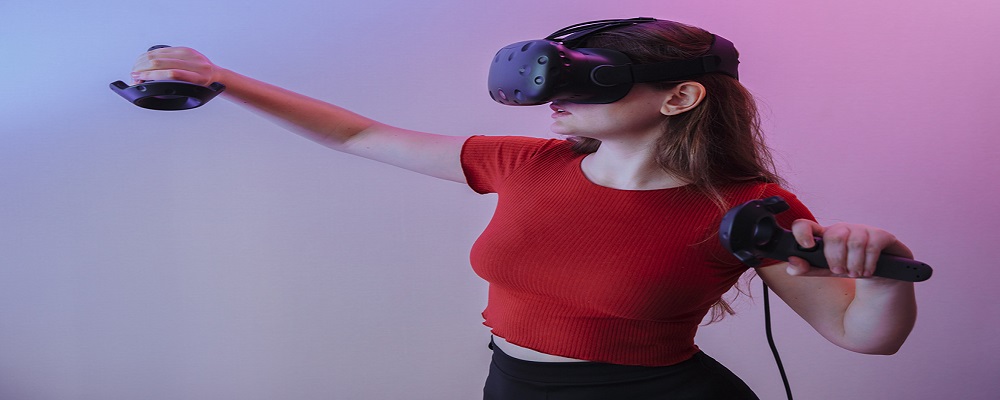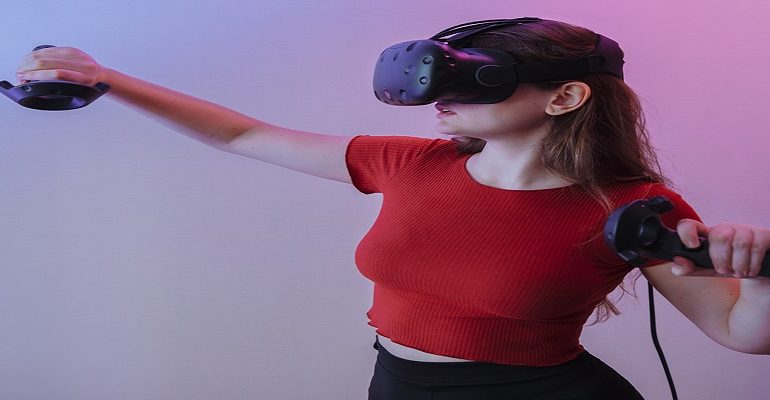
Augmented Reality (AR) Vs. Virtual Reality (VR) What’s the Difference?

Augmented Reality (AR) Vs. Virtual Reality (VR) What’s the Difference?
Two very different inventions provide an improved experience that integrates a virtual and physical world with 3D visuals. Virtual Reality (VR) and Augmented Reality (AR) hold tremendous promise for the future of real estate, healthcare, education, games, advertising, e-commerce, training, and a wide range of other industries. Even though both can be easily confused, there are substantial variations. According to recent Deloitte research, nearly 90% of companies with annual revenues of $100 million to $1 billion are now utilizing augmented reality or virtual reality technology. Let’s look at the differences between the two technologies and some current instances of how they were used to enhance the consumer experience and branding strategies.
What is Augmented Reality?
Augmented Reality (AR) is a seamless combination of the natural and virtual worlds that generates an artificial world. Some Mobile Applications are empowered with Augmented Reality.
For example, IKEA is well-known in the tech world for being one of the first companies to use augmented reality successfully. In 2012, the retailer began experimenting with augmented reality, allowing customers to use an app to see how tables and racks would appear in numerous places across their houses. IKEA is going a step beyond that with its IKEA Place App, which allows users to select any item from the store’s collection to see how it will look to measure anywhere in your home.
What is Virtual Reality?
Computer-generated modeling of an alternate world or reality is called virtual reality (VR). It aids in creating simulations that are similar to the real world and “immerse” the viewer through the use of computers and sensory devices such as headsets and controllers and gloves.
Virtual reality is used for healthcare training, education, real estate and science, in addition to games and entertainment.
Vroom for example, an online car retailer, makes the digital car-buying experience as accurate as going to a dealership. Vroom has invented a VR-powered showroom where users can navigate 15 different car models while wearing a headset.
How does AR Works?
Augmented reality can be used in several ways, such as making yourself look like a cute kitten or finding shopping malls’ directions. You can virtually try on glasses or see how new household appliances will look on your desk using AR.
AR employs computer vision, simultaneous localization, routing, and depth monitoring to display relevant data to the user. It enables cameras to collect, transmit, and process data to display digital content relevant to the user is viewing.
How does VR Works?
The purpose of virtual reality is to simulate vision. The user must place a VR headset screen in front of his or her eyes. As a result, any interaction with the real world is eliminated. Two glasses are positioned between the displays in VR. The user must adjust his or her eyes based on the individual movement and positioning of the eye. The images on the screen can also be rendered by connecting an HDMI cable to a PC or mobile phone.
Difference between AR and VR
| Sr | Augmented Reality | Virtual Reality |
|---|---|---|
| 1 | Augmented Reality (AR) combines digital reality and natural life. | Virtual Reality (VR) makes users interact with the virtual world. |
| 2 | End users will still be in touch with the natural environment while engaging with virtual elements connected to them with AR. | VR technology isolates the user from the real world and immerses him in an entirely imaginary world. |
| 3 | Requires AR enabled smart device. | Requires VR headset along with other accessories like controllers. |
| 4 | The human is inserted in augmented world using image reconstruction techniques. | A 3D avatar plays major role of human in virtual display. |
| 5 | Constrained by medium of interaction. | Open ended free movement. |
Choose your Experience
VR and AR accomplish two very different things in vastly different ways. VR needs to replace reality by transporting you to another world. AR augmented reality by layering data on top of what you’re already seeing. They both are practical innovations that have yet to impress consumers but show a lot of promise. They have the potential to completely transform how we use devices in the long term.
With new AR and VR products hitting the market daily, we help you to decide which one is best suited your business’ requirements.
